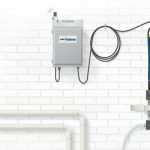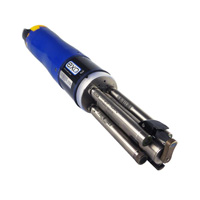
Communities treat their source water from natural resources such as aquifers, rivers, lakes, and streams to render it safe for drinking. Source water monitoring is the first crucial step in that process. Effective source water monitoring relies upon real-time water quality measurements, especially at raw water intake points.
In this post, we’ll cover the basics of source water monitoring, discuss the various possible actions to take when a raw water intake source might be contaminated, and review the ways that real-time source water monitoring protects raw water intake points and sources of drinking water.
Basics of Source Water Monitoring
Water treatment plants have several goals that shape their design and operation. Among the most important are detecting and eliminating contaminants, ensuring that the locality complies with applicable regulations, and meeting the needs and expectations of the public. Should contaminants appear in source water or local water quality change unexpectedly, this can hamper the treatment plant’s ability to achieve these goals.
Source water monitoring refers to sampling and analyzing source water or watersheds for various water quality parameters. Source water monitoring locations are the physical sites where personnel or equipment collect water samples for analysis.
Water quality management teams select source water monitoring locations relative to places along the line where they can implement response actions or modify the treatment process: control points. For example, control points might be located close to an intake or where pretreatment chemicals can easily be added.
Source water monitoring stations are collections of water quality instruments along with some kind of data logger to collect and store data, telemetry equipment that sends the data, and power sources to run the station. These stations are installed near or at source water monitoring locations. The equipment at source water monitoring stations measures whatever parameters are set for it.
Choose source water monitoring locations based on a few factors. First, conduct a source water risk assessment. This will help you determine which locations in your particular watershed might be at risk or might be strategically useful for remediation efforts. A risk assessment also reveals specific source water contaminant threats you might face, and suggest which parameters are best for monitoring for those contaminants.
You should also select locations with your source water monitoring design goals in mind. Design goals should account for your target parameters, but should also reflect your watershed. Almost any system will include a raw water intake monitoring location, but you may also require monitoring locations at different depths in lakes, or at various points along rivers. Monitoring for groundwater sources might be limited to the intake point.
Responding to Raw Water Intake Problems
In any potential drinking water contamination scenario, any given agency or utility is likely to have its own decision tree to follow. The US Environmental Protection Agency provides a contamination incident response decision tree for online source water monitoring for reference as well.
According to the EPA, when source water contamination is possible, there are three general responses that are likely. The most effective is to close the intake, preventing any contact between contaminants and either people or infrastructure. Whether or not this is possible depends on the system itself, such as whether there are other sources of raw water at hand, and also on the contamination event, in that a longer or more serious event is more difficult to contain and cut off completely.
However, one thing is certain. If it’s possible to close the intake, it only helps if you get the data about the contaminants in time. This is why it’s so critical to have real-time source water monitoring at raw water intake points. Even a brief window of shut down time can afford you the chance to take important corrective actions.
A second response to a contamination event is to neutralize the contaminant by modifying treatment. Again, however, this can only be effective if you have the right data. For this response to work, it is essential to quickly and correctly identify the contaminant and its concentration.
If neither of these other responses work a Distribution System Contamination Response Plan may need to be activated. This is the right response when there is a risk of water carrying sufficient levels of a contaminant entering the distribution system. These types of plan basically seek to isolate contaminants in the system, and then flush them out. They also include contingencies for notifying the public and ensuring the water has been rendered safe.
The Distribution System Contamination Response Plan is not your first choice, although it is sometimes necessary. Having an effective, real-time source water monitoring system in place allows you to determine which response is best.
The Value of Real-Time Source Water Monitoring
Real-time source water monitoring systems allow utilities and other users to optimize effectiveness, comply with the law, improve process efficiency, and gain the confidence and trust of the public.
When you monitor source water in real-time, you avoid costly treatments and processes such as aeration measurements until you truly need them. You can track how well your treatment system is working, ensure that your water quality is high, and verify that your infrastructure is providing you with optimal results.
Source water monitoring in real-time protects the water you’re watching, and your utility, ensuring you stay in compliance with the relevant regulations. No one wants to cope with permit violations or regulatory fines, and a deeper understanding of your reservoir’s water quality allows you to be one step ahead of turbidity events, harmful algal blooms, and other issues in your watershed. And real-time monitoring also means real-time alerts, sent directly to the right personnel.
Real-time source water monitoring increases your process efficiency. Instead of the “snapshot” you get from discrete sampling, real-time source water monitoring gives you a complete picture of your watershed, in all weather, every day. This allows you to plan based on the natural processes in the water, and seize upon optimal times for treatments, reducing costs.
At NexSens, we make customer service a real priority. We are here to help you customize a source water monitoring solution for every watershed size and budget. Whether you’re an experienced water quality professional or new to the field, we’re ready to work with you on your raw water intake and source water monitoring challenges.
Equipment
The X3 data logger offers the latest in real-time monitoring technology with wireless communication, a large plug-and-play sensor library, and ultra-low power consumption.
EXO3 is a purpose-built sonde for monitoring major water quality parameters, including: pH, conductivity, temperature, turbidity and dissolved oxygen.
WQData LIVE is a web-based project management service that allows users 24/7 instant access to data collected from remote telemetry systems.



